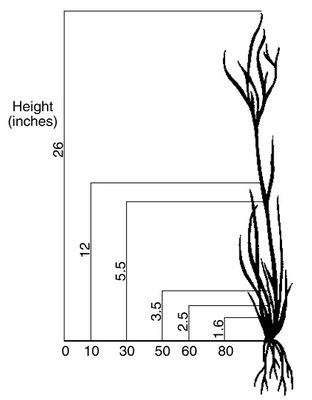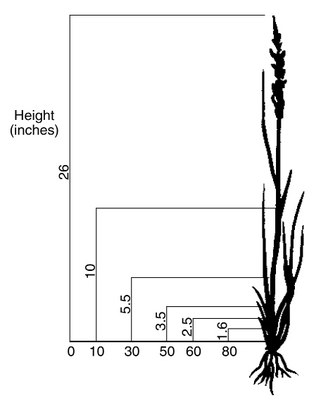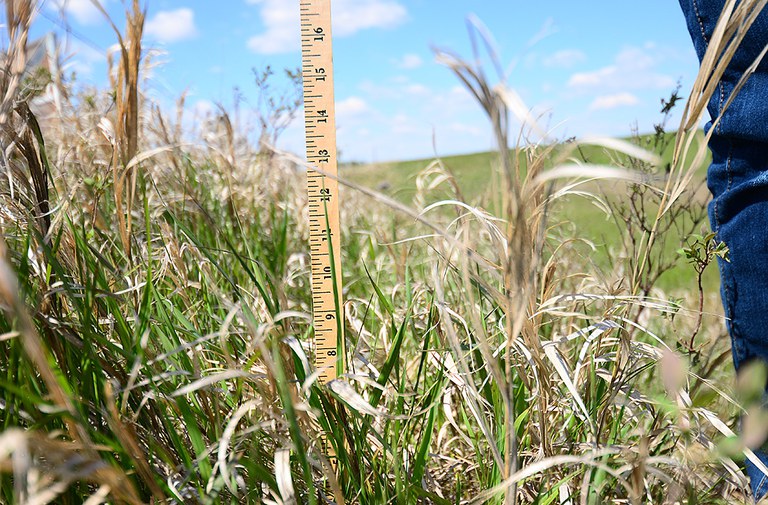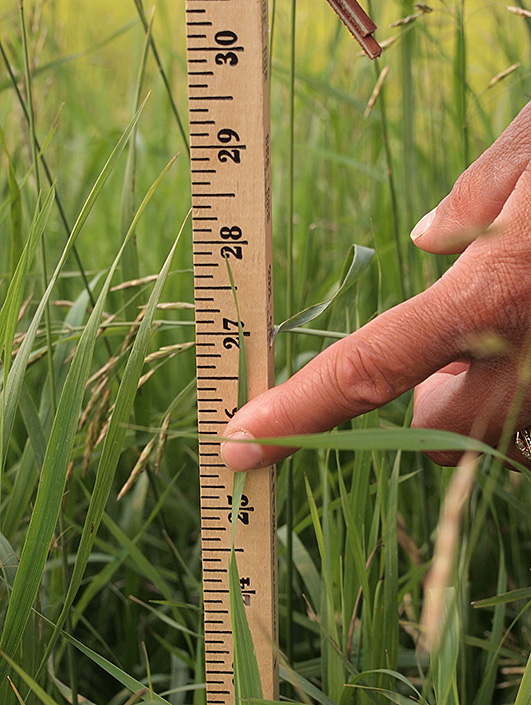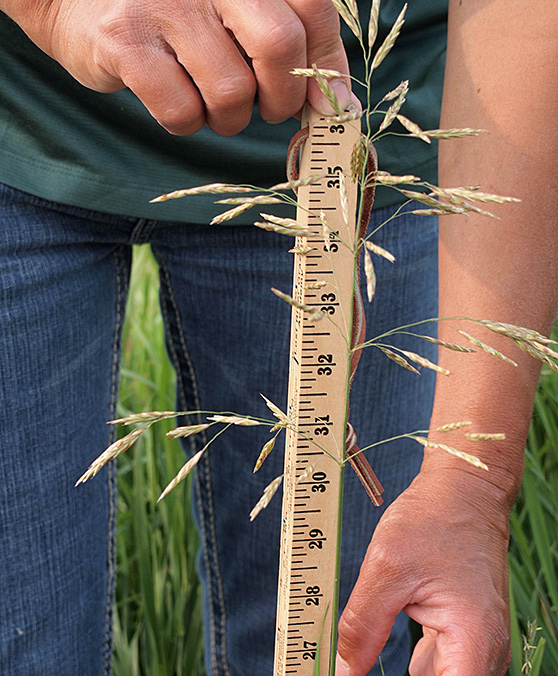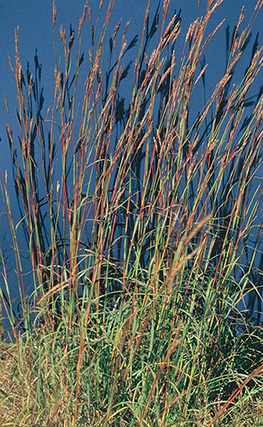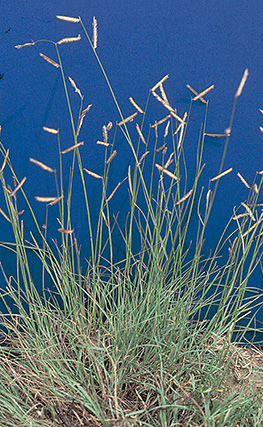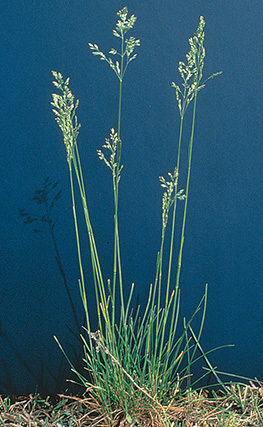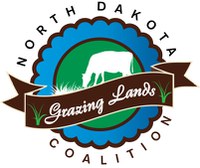Pastureland is grazing lands planted with introduced or domesticated native forage species. Common grass species planted for pastureland in North Dakota include intermediate wheatgrass, crested wheatgrass and smooth bromegrass.
Rangeland is areas of native vegetation dominated by grasses managed through manipulation of livestock grazing and/or prescribed fire. Types of rangeland include grassland, shrubland, woodland and savanna.
Utilization is a measure of the percent of the plant’s leaf area that has been removed and/or destroyed by grazing animals. A common misconception is that this is a measure of the removal of cover (height), when the recommendation is based on plant weight.
As a general rule of thumb, proper utilization is achieved when 50% of the total plant weight (not height) of key species has been utilized (Figures 1, 2 and 3). Due to differences in structure, the height of removal will vary among species, so knowing the key forage species in your pasture and rangeland is important.
Monitoring the utilization of grass can be used to determine the livestock removal date and prevent overuse or long-term impacts of overgrazing of range and pasture resources. The GMS is a modified yardstick with information related to grazing management and utilization to aid in monitoring grazing resources.
This publication is a guide to the North Dakota Grazing Monitoring Stick. Guidelines are based on plant communities of the northern Great Plains. The protocol presented in the following sections must be implemented to insure that the GMS is providing you with the correct information for your pasture or range.
The video below demonstrates how to use the North Dakota Grazing Monitoring Stick to measure range and pasture utilization.
Figures 1, 2 and 3 show different grasses and the relationship between plant height and weight. Because most of the weight of a grass plant is near the base, 50 percent use by weight is not the same level as 50 percent use by height.
Percent of weight of needle-and-thread utilized at different stubble heights.
Percent of weight of green needlegrass utilized at different stubble heights.
Percent of weight of green needlegrass utilized at different stubble heights.

